ORGANIC COTTON


The Word Organic has become Buzz word for Healt these days .
When We dig in to our Indian past , the agriculture is of purely Organic using most natural Pesticides which enhanses the Soil fertility thus keeps Human , Earth and Environment safe and sound.
Organic cotton production does not simply mean replacing
synthetic fertilizers and pesticides with organic ones.
Organic cultivation methods are based more on knowledge of
agronomic processes than input-based conventional production is.
The systemic approach aims to establish a diverse and
balanced farming ecosystem which ideally includes all types of crops and farm
activities. Farms need to complete a two-year conversion period to change their
production system from conventional to organic. An essential element of organic
production is the careful selection of varieties adapted to local conditions in
terms of climate, soil and robustness to pests and diseases.
Organic
cotton is cotton which is produced according to the internationally
recognized organic farming standards of the EU regulation 834/2007, of
the USA National Organic Program (NOP), the Indian National Program for
Organic Production (NPOP) or the Japanese Agricultural Standard (JAS).
Organic cotton is cotton that is produced and certified to
organic agricultural standards. Its production sustains the health of soils,
ecosystems and people by using natural processes rather than artificial inputs.
Importantly organic cotton farming does not allow the use of toxic chemicals or
GMOs (genetically modified organisms). Instead, it combines tradition,
innovation and science to benefit the shared environment and promote a good
quality of life for all involved.
ORGANIC COTTON FARMING SYSTEM
An organic cotton farming system is one that sustains the
health of soils, ecosystems and people. It relies on ecological processes,
biodiversity and cycles adapted to local conditions rather than the use of
artificial elements such as pesticides and other chemicals that cause adverse
effects.
Organic farming combines tradition, innovation and science
and promotes fair relationships and a good quality of life for everyone
involved.
The organic cotton farming system can be applied at
different scales. However, an average organic cotton farmer has only 4.3
hectares (one hectare equals approximately 2.5 acres), which indicates that
organic farming systems are relatively small. The following diagram shows how
an organic farming system might look on a small scale farm in India.
COMPARING CONVENTIONAL AND ORGANIC FARMING PRACTICES
ORGANIC COTTON IS BETTER FOR THE ENVIRONMENT
Reduces environmental footprint
No
toxic chemicals are used in the growing of organic cotton. It doesn’t
damage the soil, has less impact on the air, and uses 71% less water and
62% less energy. Conventional cotton uses about 16% of the world’s
insecticides and 7% of pesticides.
SOCIAL AND ECONOMIC BENEFITS
Promotes safe work & better livelihoods
Growing organic cotton keeps farmers and their families safe.
They are not exposed to toxic chemicals in the field or through their food and
water supply. It also means farmers grow more than one crop which supplements
their food and income.
Social and economic impacts aren’t easy to quantify, but to
provide an insight into the benefits experienced by organic cotton farmers,
Textile Exchange carried out a Sustainability Assessment. The findings are:
IN SIMPLE TERMS…
In 2015, by growing organic instead of conventional cotton,
we have:


Impacts our food system
Organic cotton is grown from organic cotton seeds. Cotton
seed oil is used in a variety of food products such as cookies, chips and
vegetable oil, and is also fed to livestock. So while cotton fiber is not
something we put in our body, the by-product can make its way into our diets.
Model for the future
When you buy organic cotton you are investing in water
conservation, cleaner air, better soil and farmer livelihoods. The price for
organic cotton is therefore sometimes, but not always, higher. However, with
demand on the rise, more choices will become available.
You can make a difference
Caring for the world and the people we share it with is a
life choice. Choosing organic cotton is part of this choice. In 2015, 26
million metric tonnes of cotton was produced globally, much of it for the
apparel industry. Organic cotton makes up less than 1% of this. By choosing
organic over conventional cotton you have the purchasing power to influence
brands, manufacturers and even farmers. So let’s change this number.
State wise area and
production of cotton State
|
2017-18
|
2018-19
Estimated
|
|||||||
Area
(lakh
ha)
|
Production
(lakh
bales)
|
Area
(lakh
ha)
|
Production
(lakh
bales)
|
||||||
AndhraPradesh
|
6.44
|
20.50
|
5.51
|
17.54
|
|||||
Gujarat
|
26.23
|
104.00
|
27.08
|
107.37
|
|||||
Haryana
|
6.69
|
22.50
|
6.65
|
22.37
|
|||||
Karnataka
|
5.46
|
18.00
|
5.48
|
18.07
|
|||||
MadhyaPradesh
|
6.03
|
20.50
|
6.97
|
23.70
|
|||||
Maharshtra
|
42.07
|
85.00
|
41.23
|
83.30
|
|||||
Odisha
|
1.45
|
3.50
|
1.57
|
3.79
|
|||||
Punjab
|
2.91
|
11.50
|
2.84
|
11.22
|
|||||
Rajasthan
|
5.84
|
22.00
|
4.96
|
18.68
|
|||||
Tamilnadu
|
1.85
|
5.50
|
0.21
|
0.62
|
|||||
Telangana
|
18.97
|
55.00
|
17.96
|
52.07
|
|||||
Others
|
0.50
|
2.00
|
0.17
|
0.68
|
|||||
India
|
124.44
|
370.00
|
120.64
|
358.70
|
|||||
Source : http://agricoop.nic.in/all-india-crop-situation

Benefits of Organic Cotton
Organic cotton shows great benefits at various levels of the value chain.
Farmers,
traders, retailers and consumers all benefit from the economic, social
and ecological advantages of organic cotton projects. Click on the
buildings to see the benefits for each group:

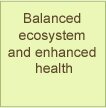 | 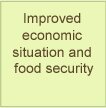 |  |  |

 | 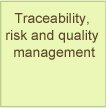 | 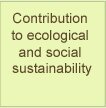 |  |

 | 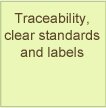 |  |  |
World Organic Cotton Statisticks
IN-CONVERSION ORGANIC COTTON
(HA LAND)
India 172,180
Tanzania 18,409
Pakistan 12,283
China 5,108
Turkey 2,721
There are currently two independent organic certifications
for organic cotton: Organic Content Standards (OCS) and Global Organic Textile
Standard (GOTS). The difference between
the two standards are:

